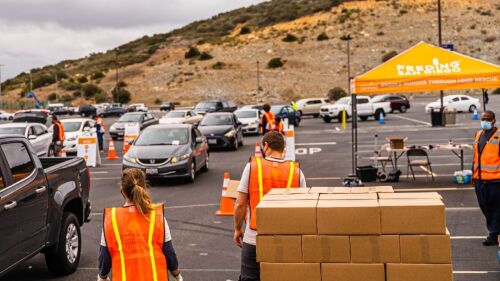Between February and October you’re much more likely to come across baby animals that appear sick, injured, or abandoned. Our advice: Trust the pros.
Meet your local wildlife rehabs
San Diego Humane Society’s Project Wildlife rehabilitates nearly 12,000 orphaned, sick, and injured animals each year before releasing them back to their native habitats.
Between the project’s educational programs, online resources for coexisting with wildlife, and “Found Wildlife” guides, you never have to guess when it comes to wildlife care. Call (619) 299-7012 in case of a wildlife emergency and leave detailed message.
But what about our ocean friends? SeaWorld Rescue operates one of the world’s largest marine wildlife rehabilitation programs.
If you notice a beached or stranded animal, report it at 1-800-541-7325. SeaWorld San Diego also partners with local and federal agencies, so in a pinch you can call your nearest wildlife center — the experts there will talk you through it.
But before calling anyone, you should make sure the animal is actually in danger.
Assess the situation
Many animals brought into wildlife rehabilitation centers aren’t actually abandoned. An animal displaying no indicators of distress or injury may just be waiting for mom. If the animal is bleeding or obviously injured, it’s time to get the experts involved.
Be mindful of the animal’s well-being
Don’t act immediately when you’ve determined an animal is abandoned. Human contact stresses the animal and could lead to injury and disease (to you and the animal). Human food or improper feeding techniques can also cause harm. Keep a close eye, be patient, and consult a licensed rehabilitator.
At this point, you’re in good hands. Follow their instructions to safely bring in the animal, and take pride in a good deed done. Mother Nature thanks you.











